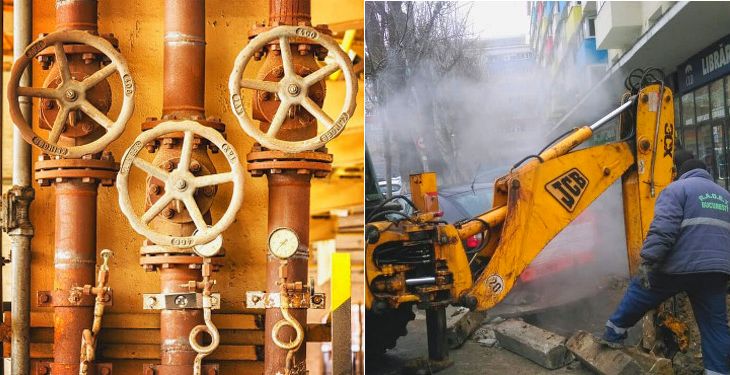In 1989 there were 315 district heating systems in Romania, to which were connected over 88,000 blocks, which supplied about 2.9 million apartments. The latest data communicated by ANRE show that there are about 1.1 million apartments connected to DHSs and less than 50 authorized operators of public heat supply services in centralized regime.
Every year, millions of Romanians live with the fear of heating and hot water services being interrupted, given that many of the centralized heating systems still functional are outdated, inefficient, insolvent or already bankrupt. Energynomics has made a synthesis with 5 things you need to know about district heating in Romania.
Now, we invite you to have your say! Vote and suggest any other things we need to know about district heating in Romania!
District heating systems (DHS) provide a services that the authorities have a legal obligation to make available to the public
DHSs are the most efficient solution for heating areas with high-density housing
In theory and in practice, but in other countries! Currently, most district heating systems in Romania are not efficient; they can be rehabilitated / redesigned by implementing modern sources of thermal energy production, by replacing and resizing old pipelines.
The vast majority of district heating operators are under the EU-ETS requirements to pay for CO2 emissions
This can be interpreted as discriminating against individual heating installations that operate on natural gas, but do not pay for the greenhouse gas emissions they release into the atmosphere.
Individual heating systems contribute to increasing the pollution
Failure to comply with the principle of the Heating Law (325/2006) “one condominium – one heating system” has led to increased pollution in cities and decreased efficiency of centralized systems. In addition, many of the people living in the blocks did not have the resources to install alternative heating sources or they used improvised solutions, amplifying the risk of accidents (fires, electric shocks, etc.).
Studies show that in large urban agglomerations, emissions from individual heating installations contribute to increased pollution; they highlight the negative effects of pollution in residential areas where natural gas is used to heat homes in individual installations.
The solution proposed by the experts consists in eliminating the pollution sources emitted by the individual heating equipment and using centralized systems that use power plants outside urban agglomerations, so that they do not affect the quality of the air.
For the next EU financing period, an Operational Program is needed to finance investments in efficient district heating systems
Between 2021 and 2030, the amounts of greenhouse gas emissions will have to be sharply reduced; under these conditions, the price of CO2 certificates is expected to remain high, and even to increase. Urgent measures are needed to increase the overall efficiency of centralized heat supply systems throughout the chain – production, transport, distribution and final consumption, in order to reduce primary energy consumption, thus reducing CO2 emissions.
For the next financing period (2021-2027), central and local public authorities should consider implementing an Operational Program to finance investments in the rehabilitation / modernization or development of efficient district heating systems.
